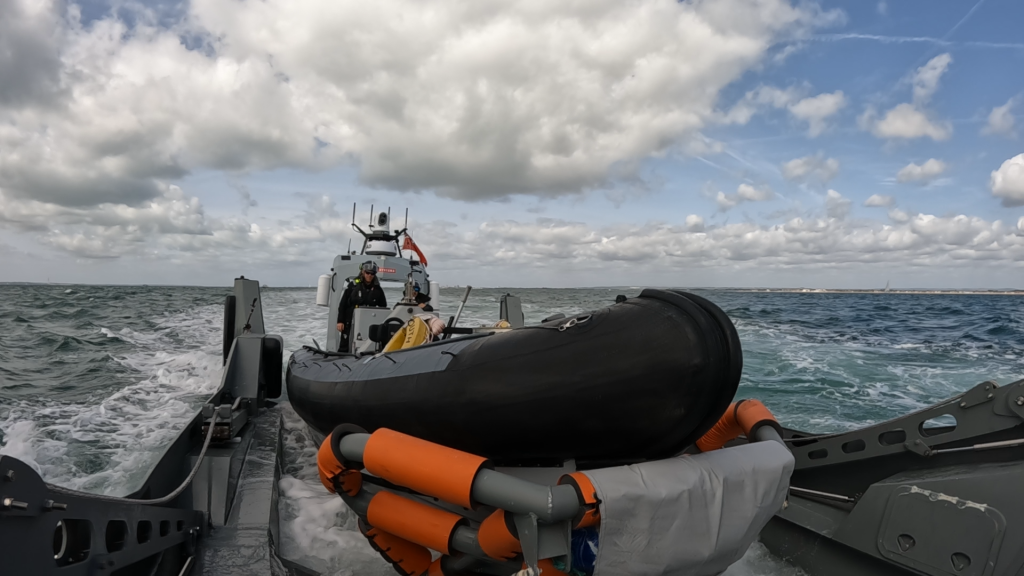
Autonomous Launch and Recovery Capability
The Importance of Autonomous Launch and Recovery Capability for the Maritime Unmanned Systems Market
The autonomous marine systems market is rapidly evolving, driven by technological advancements and an increasing reliance on unmanned marine vehicles in both defense and commercial sectors. These systems, including Autonomous Surface Vessels (ASVs) and Autonomous Underwater Vehicles (AUVs), are transforming the way maritime operations are conducted, offering enhanced efficiency, safety, and operational reach.
The Growing Need for Unmanned Marine Systems
Unmanned marine systems are no longer a futuristic concept; they are essential tools for modern maritime operations. Their applications span a wide range of activities, including oceanographic research, environmental monitoring, offshore energy exploration, and military operations. With the global push toward automation and reduced human involvement in hazardous environments, the demand for unmanned systems is accelerating.
However, a key bottleneck remains in realizing the full potential of these systems: the challenge of automating their launch and recovery (LAR) processes, especially in dynamic and unpredictable sea conditions.
The Challenge of Launch and Recovery
Deploying and recovering untethered marine robotics from a mothership presents unique technical and operational challenges. Factors such as wave height, vessel motion, and system stability make LAR one of the most complex aspects of autonomous marine operations. Unlike traditional vessels, these autonomous systems often need to be deployed and recovered without human intervention, demanding a high degree of precision and reliability.
A critical limiting factor for the widespread deployment of unmanned systems is the absence of robust and effective LAR solutions. Without this capability, even the most advanced ASVs and AUVs face operational constraints, limiting their deployment in high seas or during missions requiring rapid deployment and retrieval.
The Need for Advanced LAR Solutions
The development of autonomous LAR systems is vital for unlocking the full potential of the unmanned marine systems market. Effective LAR solutions must ensure safe and efficient deployment and recovery in varying sea states, minimizing risks to both the mothership and the unmanned vehicles. Key considerations include:
• Autonomous Precision: Systems must navigate and dock autonomously, compensating for the motion of the mothership and environmental conditions.
• Reliability in Harsh Conditions: Solutions must be resilient to rough seas and adverse weather, ensuring operational continuity.
• Scalability: As the demand for unmanned systems grows, scalable LAR systems will enable simultaneous deployment and recovery of multiple vehicles.
A Catalyst for Market Expansion
Innovations in autonomous LAR technology will not only address current challenges but also open new avenues for the unmanned marine systems market. Enhanced LAR capabilities will enable more extensive operations in offshore and deep-sea environments, supporting applications such as subsea pipeline inspections, fisheries management, and defense surveillance.
For defense applications, the ability to quickly deploy and recover multiple unmanned systems from a mothership is critical for strategic operations such as mine detection, reconnaissance, and anti-submarine warfare. In commercial markets, effective LAR solutions will support the growing use of unmanned systems in offshore industries, where reliability and efficiency are paramount.
Conclusion
The maritime unmanned systems market stands at the cusp of transformative growth, yet the lack of effective autonomous launch and recovery capabilities remains a significant barrier. Overcoming this challenge is not just an engineering necessity but a market imperative. The companies that succeed in delivering robust and reliable LAR solutions will be at the forefront of this rapidly expanding industry, driving innovation and enabling the next wave of maritime autonomy.